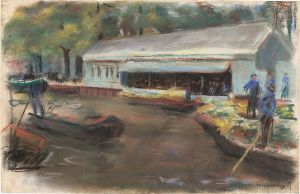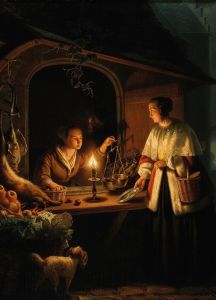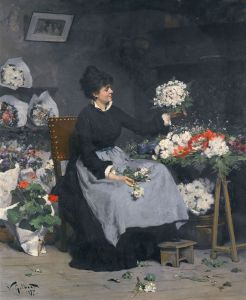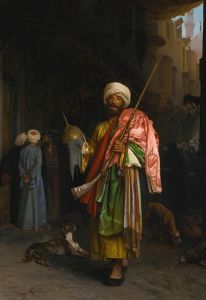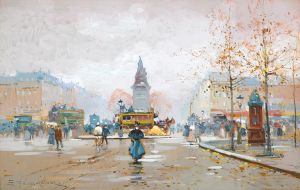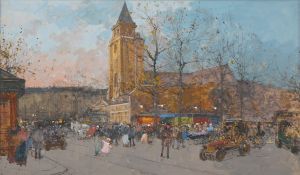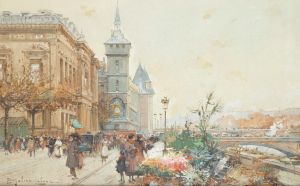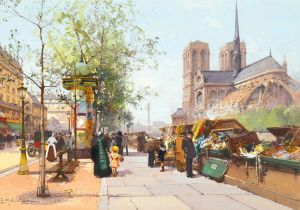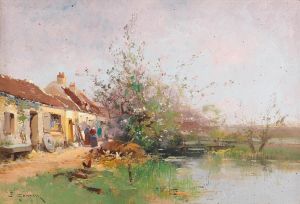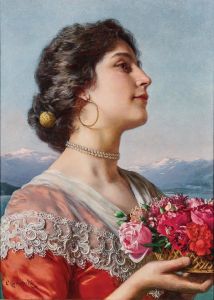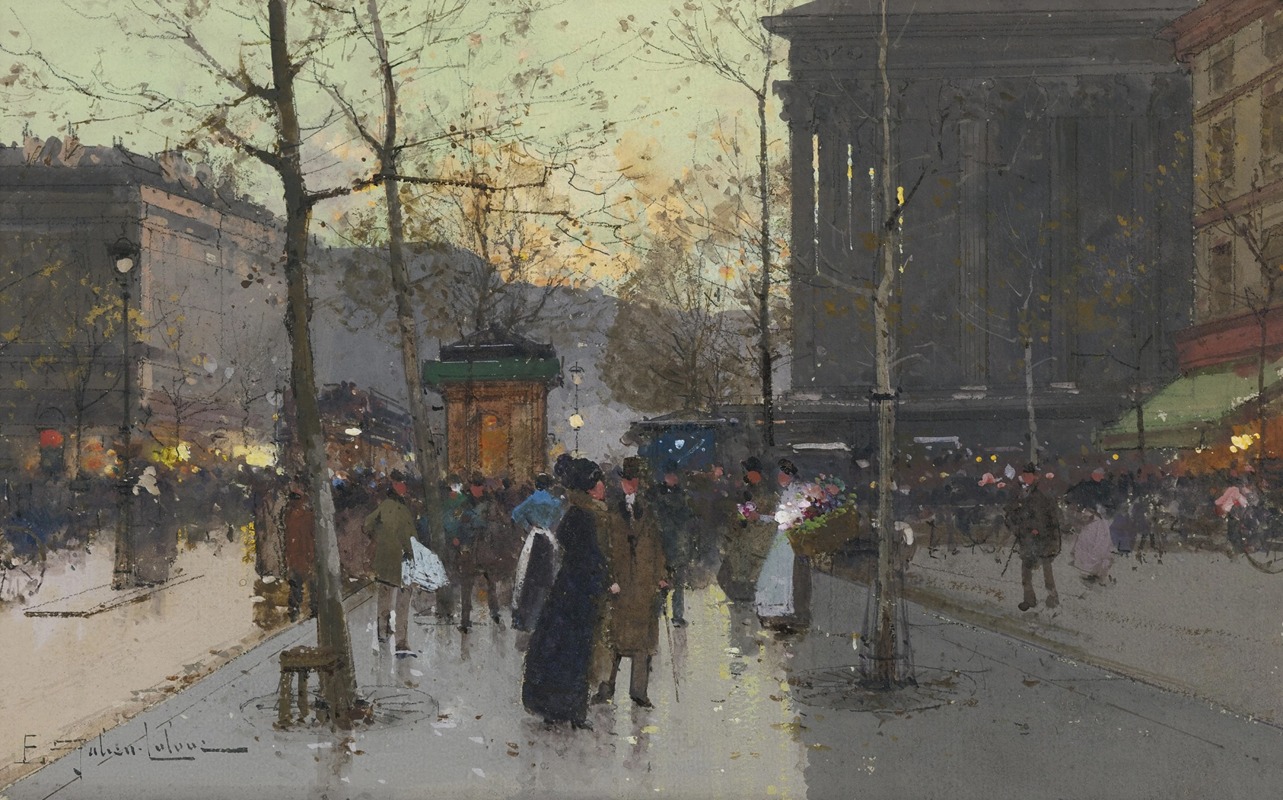
Marché de Fleurs, la Madeleine
A hand-painted replica of Eugène Galien-Laloue’s masterpiece Marché de Fleurs, la Madeleine, meticulously crafted by professional artists to capture the true essence of the original. Each piece is created with museum-quality canvas and rare mineral pigments, carefully painted by experienced artists with delicate brushstrokes and rich, layered colors to perfectly recreate the texture of the original artwork. Unlike machine-printed reproductions, this hand-painted version brings the painting to life, infused with the artist’s emotions and skill in every stroke. Whether for personal collection or home decoration, it instantly elevates the artistic atmosphere of any space.
"Marché de Fleurs, la Madeleine" is a painting by the French artist Eugène Galien-Laloue. Born in Paris on December 11, 1854, Galien-Laloue was known for his detailed and atmospheric depictions of Parisian street scenes, particularly those set in the late 19th and early 20th centuries. His works often capture the bustling life and architectural beauty of Paris, making him a significant figure in the genre of urban landscape painting.
The painting "Marché de Fleurs, la Madeleine" showcases the flower market near the Church of La Madeleine, one of Paris's most iconic landmarks. The Church of La Madeleine, with its neoclassical design resembling a Roman temple, serves as a striking backdrop in many of Galien-Laloue's works. This particular painting is no exception, featuring the church's grand columns and detailed façade.
Galien-Laloue's technique involved the use of gouache, a type of opaque watercolor, which allowed him to achieve a high level of detail and vibrant color in his works. His ability to capture the play of light and shadow, as well as the lively atmosphere of Parisian streets, is evident in "Marché de Fleurs, la Madeleine." The painting likely dates from the late 19th or early 20th century, a period when Galien-Laloue was most active and prolific.
In "Marché de Fleurs, la Madeleine," Galien-Laloue depicts a typical day at the flower market, with vendors and customers engaging in their daily routines. The scene is bustling with activity, as people peruse the colorful array of flowers on display. The artist's attention to detail is evident in the intricate depiction of the flowers, the clothing of the figures, and the architectural elements of the church.
Galien-Laloue's work is characterized by its romanticized yet realistic portrayal of urban life. His paintings often evoke a sense of nostalgia for a bygone era, capturing the charm and elegance of Paris during the Belle Époque. "Marché de Fleurs, la Madeleine" is a prime example of this, offering viewers a glimpse into the vibrant street life of historical Paris.
Throughout his career, Galien-Laloue used several pseudonyms, including "L. Dupuy," "Juliany," and "E. Galiany," among others. This practice was common among artists of the time, allowing them to sell more works without oversaturating the market under a single name. Despite this, Galien-Laloue's distinctive style and subject matter have made his works easily recognizable and highly sought after by collectors and art enthusiasts.
Eugène Galien-Laloue passed away on April 18, 1941, but his legacy lives on through his extensive body of work. His paintings continue to be celebrated for their historical significance and artistic merit, offering a window into the daily life and architectural splendor of Paris during a transformative period in the city's history.
"Marché de Fleurs, la Madeleine" remains a testament to Galien-Laloue's skill as an artist and his ability to capture the essence of Parisian life. It stands as a beautiful and enduring representation of the flower market at La Madeleine, immortalizing a vibrant scene that continues to captivate viewers to this day.






